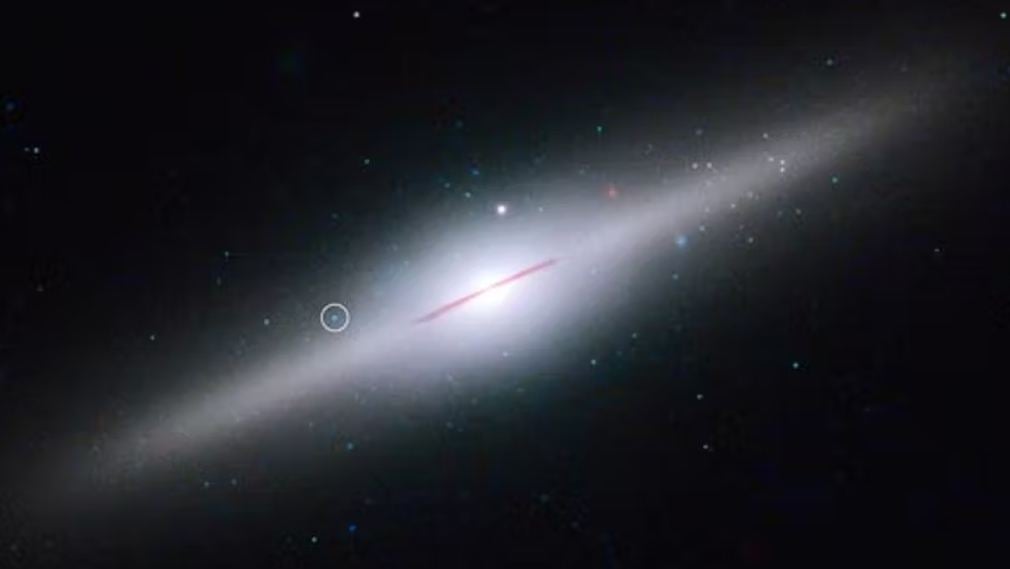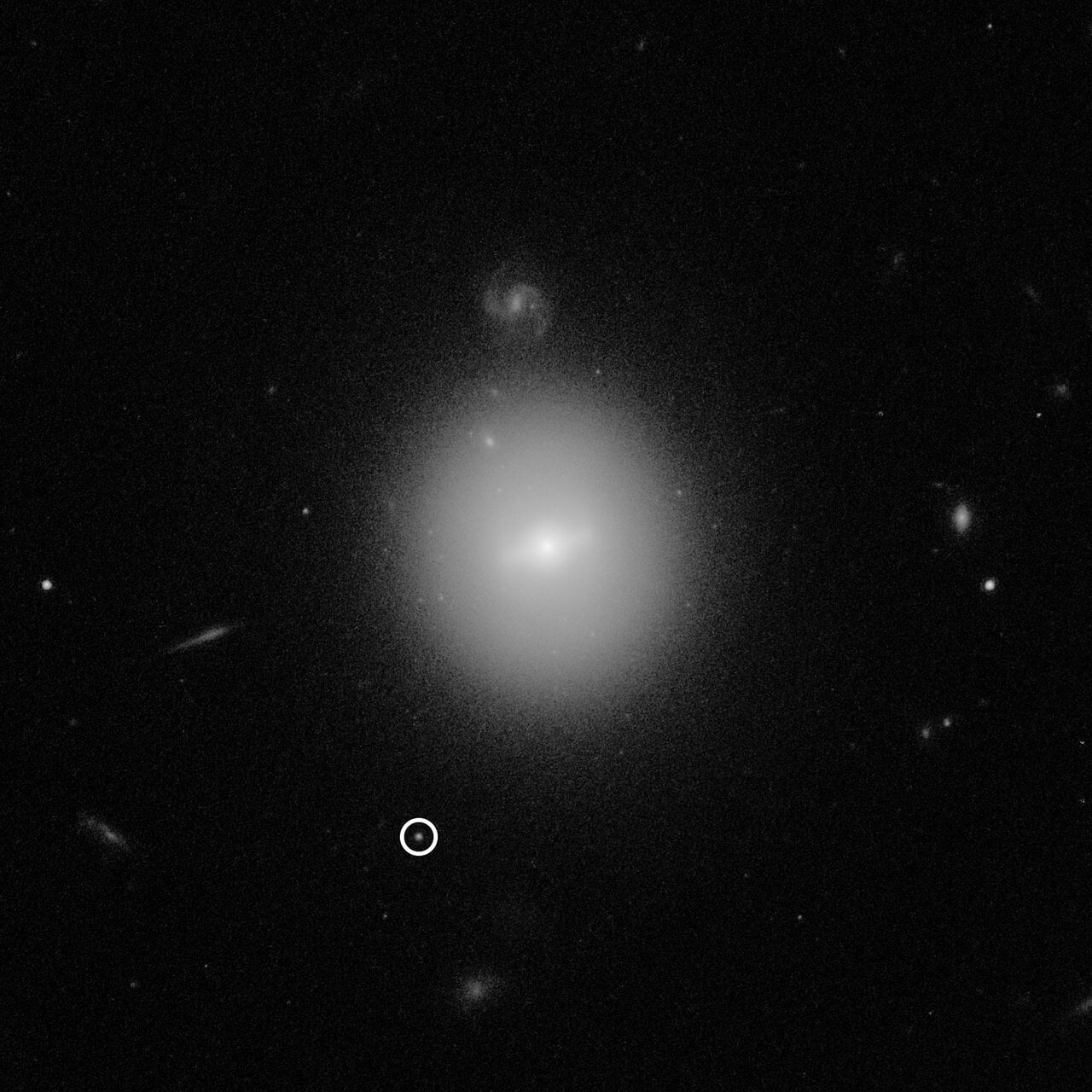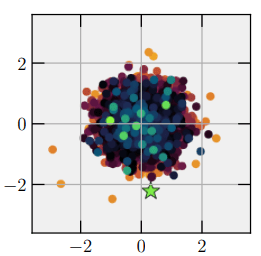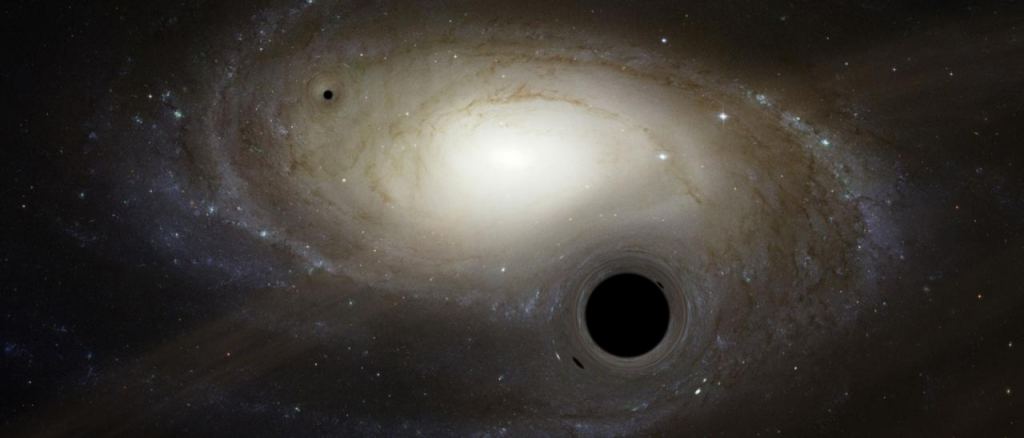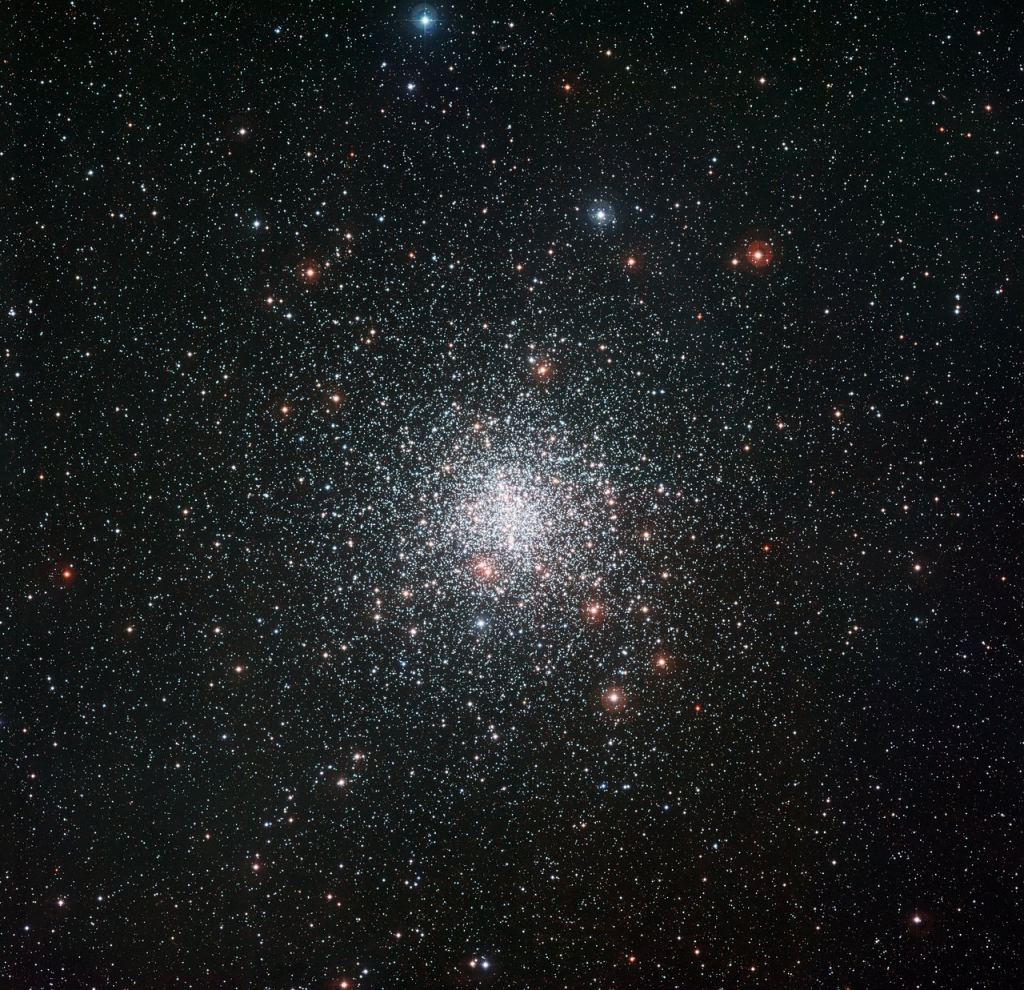Most black holes are stellar mass black holes. They're created when a star several times more massive than our Sun reaches the end and collapses in on itself. There are also supermassive black holes (SMBH,) the behemoths at the center of galaxies that can boast billions of times more mass than the Sun.
But where are the intermediate-mass black holes?
Intermediate black holes (IMBHs) are between 100 and 100,000 solar masses. The hunt for these elusive objects has gained momentum in recent years, with astronomers finding evidence for several of them. HLX-1, a potential IMBH, was identified in 2009, in a star cluster about 300 million light-years away. In May 2019, astronomers detected GW 190521, a gravitational wave from an IMBH that was almost certainly the result of two merging black holes. Another potential IMBH, 3XMM J215022.4-055108, is also a strong candidate, and the Hubble Telescope had a hand in discovering it in 2020.
Many astronomers think that IMBHs are abundant, but they're extraordinarily difficult to find. In 2022, researchers at the Instituto de Astrofísica de Canarias (IAC) found unusual emissions in more than 50 galaxies that they say can only be caused by accretion disks around IMBHs. In 2023, research showed that IMBHs frequently eat stars and should be detectable by the consecutive electromagnetic flares released as the stars are tidally disrupted.
Though those findings are compelling, the evidence isn't strong enough for the wider astronomy community to conclude that all of these potential IMBHs are real. But IMBHs are almost certainly the building blocks for supermassive black holes like the one in the Milky Way, Sagittarius A*. They must be out there, waiting for us to figure out how to observe them.
In new research to be published in the Monthly Notices of the Royal Astronomical Society, researchers examined Messier 4, or NGC 6121, a globular cluster over 7,000 light-years away. They used the Hubble Space Telescope and data from the ESA's Gaia mission to locate what they think could be an IMBH in M4's core. The study is titled " An elusive dark central mass in the globular cluster M4," and the lead author is Eduardo Vitral of the Space Telescope Science Institute in Baltimore, Maryland.
"Science is rarely about discovering something new in a single moment. It’s about becoming more certain of a conclusion step by step, and this could be one step towards being sure that intermediate-mass black holes exist,.”Timo Pruste, Gaia mission scientist
The research revolves around an excess of dark mass that astronomers have found not only in M4 but in the cores of other globular clusters. According to the new research, M4's dark mass is either a collection of white dwarfs or stellar mass black holes, or an IMBH of about 800 solar masses. Even though M4 is the closest globular cluster, it's still a long way away, and resolving individual stars in the cluster's dense core is difficult. This research takes advantage of 12 years of Hubble observations of M4, combined with Gaia data, to resolve and pinpoint some of the stars, their velocities, and their motions.
By measuring the velocity distribution of thousands of M4's stars, the researchers were able to constrain the dark mass in the cluster's core. "Our fits of an inner mass excess are the first to suggest an inner dark mass of roughly 800 solar masses in M4," they write. The question is, how widely is the mass distributed? And is there a way to determine if all that mass is a single object like an IMBH or a collection of massive objects, like stellar black holes that haven't merged?
One star stood out in the data. It's a high-velocity star that the authors think was sped up by interactions with an IMBH in M4's center. "If the high-µ star is associated with a putative IMBH, its high velocity could be eventually explained by a dynamical kick after close passage to the compact object," they write. They also point out that modelling shows that an IMBH in M4's center gives a 33% chance of finding a high-velocity star in the cluster's central region.
The high-velocity star isn't enough evidence on its own. It indicates concentrated mass in the cluster's core, but can't determine the nature of the mass.
But the researchers were able to effectively remove the high-velocity star from their simulations to see what effect it had on the nature of the central mass. "However, when removing a high-velocity star from the cluster centre, the same mass excess is found, but more extended," they explain.
A more extended mass could indicate that it's a collection of individual objects rather than a single IMBH. But unfortunately, they still couldn't be certain. "... our excess mass is not sufficiently extended to be confidently associated with a dark population of remnants," they write.
"Using the latest Gaia and Hubble data, it was not possible to distinguish between a dark population of stellar remnants and a single larger point-like source," lead author Vitral said in a press release. "So one of the possible theories is that rather than being lots of separate small dark objects, this dark mass could be one medium-sized black hole."
"We have good confidence that we have a very tiny region with a lot of concentrated mass. It's about three times smaller than the densest dark mass that we had found before in other globular clusters," he continued. "The region is more compact than what we can reproduce with numerical simulations when we take into account a collection of black holes, neutron stars, and white dwarfs segregated at the cluster's centre. They are not able to form such a compact concentration of mass."
If the dark mass is individual objects, then they would likely be unstable. The amount of mass the team measured in M4's core would have to be about 40 smaller black holes. But they'd be compressed into a region only 1/10th of a light-year across. Only a grouping that tight could produce the observed motions of individual stars. It's difficult to imagine 40 black holes playing nicely together in such a small space. There would be mergers and ejections.
In a press release, lead author Vitral explains the team's results in broad, clear terms. "We measure the motions of stars and their positions, and we apply physical models that try to reproduce these motions. We end up with a measurement of a dark mass extension in the cluster's centre," said Vitral. "The closer to the central mass, the more randomly the stars are moving. And, the greater the central mass, the faster these stellar velocities."
In the end, the team's results lean towards the presence of an IMBH in M4. The mass may be too concentrated to be covered by the other leading explanation, a cluster of stellar mass black holes or other stellar remnants. "We also fitted the extension of such a mass and find a relatively small scale radius (namely, 0.016 pc), which, although not point-like as expected for an IMBH, it still remains too small to be reliably associated with a collection of dark remnants," they write in their conclusion.
But they're still inconclusive, and neither scenario can fully explain their findings. Something more exotic could be at work in M4. Though they lean towards an IMBH as the best fit for all the data and modelling, they can't completely rule out a collection of black holes. "Although we find it hard to fully explain either scenario from the theoretical side, we highlight that a concentration of stellar remnants would still seem like a more realistic solution from recent studies of globular clusters," they write.
The only way to reach a stronger conclusion is with more accurate, precise data. Gaia's next data release will help, as will more observations with the Hubble, and, hopefully, the James Webb Space Telescope.
"The physics of the inner mass of M4 deserves additional study," Vitral and his colleagues write. "Our results hence set an interesting target for future observational campaigns and open an important debate concerning the closest globular cluster to our Sun."
"Science is rarely about discovering something new in a single moment. It's about becoming more certain of a conclusion step by step, and this could be one step towards being sure that intermediate-mass black holes exist," explains Gaia mission scientist Timo Prusti. "Data from Gaia Data Release 3 on the proper motion of stars in the Milky Way were essential in this study. Future Gaia Data Releases, as well as follow-up studies from the Hubble and James Webb Space Telescopes, could shed further light."
More:
- Press Release: Hubble hunts for intermediate-sized black hole close to home
- New Research: An elusive dark central mass in the globular cluster M4
- Universe Today: Astronomers Discover an Intermediate-Mass Black Hole as it Destroys a Star
 Universe Today
Universe Today

